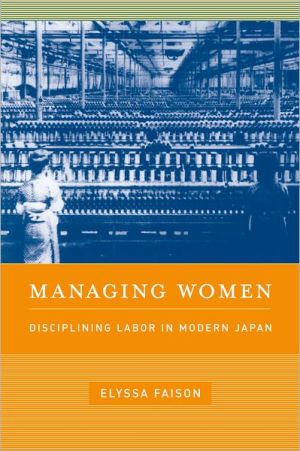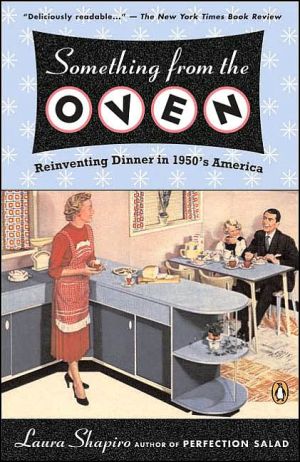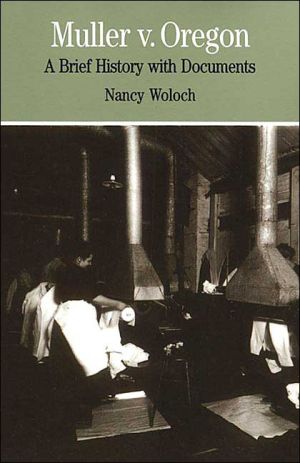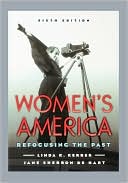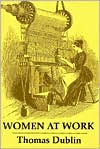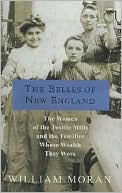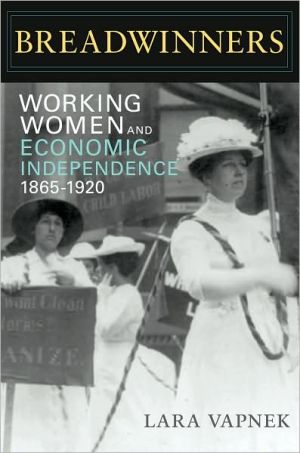Managing Women: Disciplining Labor in Modern Japan
At the turn of the twentieth century, Japan embarked on a mission to modernize its society and industry. For the first time, young Japanese women were persuaded to leave their families and enter the factory. Managing Women focuses on Japan's interwar textile industry, examining how factory managers, social reformers, and the state created visions of a specifically Japanese femininity. Faison finds that female factory workers were constructed as "women" rather than as "workers" and that this...
Search in google:
"Managing Women is an important work, filled with fascinating description, and accessible to a broad audience. I expect this to become a widely known and much cited book."—Mark Metzler, author of Lever of Empire: The International Gold Standard and the Crisis of Liberalism in Prewar Japan
Managing Women\ Discipline Labor in Modern Japan \ \ By Elyssa Faison \ University of California Press\ Copyright © 2007 The Regents of the University of California\ All right reserved.\ ISBN: 978-0-520-25296-7 \ \ \ \ Chapter One\ From Home Work to Corporate Paternalism \ Women's Work in Japan's Early Industrial Age\ When the Meiji state oversaw the opening of Japan's first government-run textile mill in 1872, its leaders had already decided that female labor would propel the early stages of Japan's industrial revolution. The government's part in initiating industrial development by funding and operating the Tomioka Silk Filature in Gunma Prefecture, and the strong role the state would play throughout the Meiji period (1868-1912) in directing the growth of capitalist institutions, ensured that the growth of industry could never be separated from the fortunes of the nation. If the industrial technologies of the Meiji period reflected the goals of a nation aspiring toward "civilization and enlightenment," it followed that industrial labor should similarly reflect the patriotic nature of the project of industrialization.\ In the textile factories that fueled Japan's earliest and arguably most intense drive for industrialization, the vast majority of factory operatives were Japanese women and girls, ranging in age from approximately thirteen to twenty-five years old. In the silk-reeling factories women accounted for roughly 85 percent of all workers while in cotton spinning and weaving they made up 70 percent of the workforce, making Japan's early industrialization and capital accumulation dependent on the labor of rural women and girls. Their participation in the industrial project coincided precisely with the Meiji state's attempt to re-envision the parameters of Japanese womanhood and the place of women within the imperial state. As Japanese women's historian Koyama Shizuko has demonstrated, the womanly ideal of "good wife, wise mother" (ryosai kenbo) took hold as an organizing principle of female gender immediately after the Meiji Restoration (1868). "Good wife, wise mother" grew out of debates over women's education that began with the institution of compulsory elementary education for both males and females. With this ideology as its anchor, the modern family emerged as a primary site for the mobilization of national citizens by a new, modern nation-state undergoing large-scale urbanization, industrialization, and militarization. For female industrial labor especially, the family became the site first of recruitment efforts and then of corporate control, as companies invoked the authority of male family members (who in most cases had signed the employment contracts on behalf of their daughters) to induce desired behaviors in their workers. In some cases this invocation came in the form of admonishments to work hard so as to fulfill their filial duty to their parents, but in more extreme cases (as we will see in chapter 4) fathers and brothers were asked to come to the factory to take in hand daughters and sisters who had decided to participate in strike activities.\ Because middle-class assumptions underlay the feminine ideal predicated on the "good wife, wise mother" ideology, wage-earning women and girls working in factories (and thus cut off from the domestic sphere) embodied the tensions inhering in classed understandings of female gender throughout the early twentieth century. This became particularly true once the "good wife, wise mother" ideology was supplemented by the birth of the shufu, or "housewife," ideal. The housewife ideal emerged from the confluence of new configurations of family life and domestic space and the appearance of a bourgeois middle class around the time of the First World War. The housewife embodied the modern and scientific rationalism found in the study of home economics, which she practiced with single-minded dedication. But as part of the acquisition of her specialized knowledge of domestic management, she was most frequently a graduate of a girls' higher school, which Jordan Sand has described as the "true hatcheries of professional housewives." Thus, the education and middle-class status required to attain the status of housewife and to be considered a true "good wife, wise mother" remained elusive for working-class women and for girls from poorer farming families.\ Factory managers, concerned with disciplining Japan's first generation of industrial laborers to be productive workers, attempted to resolve tensions between gender and class by designating female textile labor a temporary condition and promoting the womanly values of motherhood and domesticity within the factory itself. This allowed them to offer to employees educational and cultural amenities that they framed as opportunities to become ideal (and presumably middle-class) housewives and mothers. A poor farming family might not be able to afford to send their daughter to the local elementary school, much less the girls' higher school that might make her into a "lady." But they could send her to work in a cotton-spinning mill that offered not only an attractive advance to the family, but also the hope that she might receive some basic education and training in the womanly arts. Such amenities were rarely offered during the Meiji period, but by the 1920s they had become a primary means of recruitment and retention for companies hungry for a stable workforce.\ But in fact, many female workers did not leave the factory for marriage and a life of domesticity, but rather moved to positions in other better paying textile companies or else to new jobs in the service industry. A survey conducted in 1936 found that of 204 female workers who had quit work at large cotton mills to return home, 46 percent said they planned to go out and find employment in another cotton mill, and only 23 percent had gotten married. In other words, the standard narrative propounded by contemporary commentators that viewed female factory work as a temporary form of employment overlooked large segments of the wage-earning female population. While many female workers may have worked only temporarily (for a few years) in any given company, they often moved to similar employment at another textile company rather than abandoning wage work altogether. There are no comprehensive statistics to indicate the number of women who did return home to their villages to marry after a few years of textile factory work. But the scattered surveys and oral histories that do exist suggest a wide range of paths chosen by former textile operatives. Some returned to the countryside and took up agricultural work, some moved from company to company for a number of years, and others settled in towns and cities nearby the factories they had quit to marry or to take up work as maids, shop hands, bar hostesses, waitresses, or prostitutes.\ Since before the Meiji Restoration, women from a variety of classes had engaged in home work (naishoku), or cash-paying "side jobs" that could be performed in the home in addition to unremunerated domestic work. Such work, which often involved sewing, embroidering, and other crafts associated with domestic life and identified as women's work, became commonplace after World War I among women of the middle classes as well. In fact, as increasing numbers of women entered the paid labor force in the 1920s, naishoku was encouraged by some social commentators as the form of "employment" most consistent with the "good wife, wise mother" philosophy that circumscribed women's roles within the home.\ Work in the form of naishoku did not challenge ideals of women as primarily mothers and household managers and had become acceptable for urban middle-class women as well as those from rural agriculturalist families. Industrial labor for women and girls in textile factories, however, took women out of the domestic sphere and simultaneously marked them as part of what journalist Yokoyama Gennosuke called the "lower strata society" (kaso shakai). Yokoyama coined the term kaso shakai to describe the working poor whose livelihoods (as well as their dire poverty) were a product of Meiji urbanization and industrialization. Those who fell into this lower strata included rag pickers, tenant farmers, male iron and steel workers, and female cotton and silk spinners in the newly mechanized textile industry (figure 1).\ FACTORY WORK FOR THE NATION\ With Japan's rapid industrialization after the Meiji Restoration, the textile industry was responsible for bringing in large amounts of the foreign cash so desperately coveted by the Meiji leaders. Women and girls who customarily engaged in naishoku were recruited as low-wage laborers in silk and cotton-spinning and -weaving factories. Even before the turn of the century, the government had created a flourishing environment for industrial capital by selling to industry many enterprises that had been established and supported at public expense. From 1910 through the 1920s, textiles accounted for roughly 50 percent of industrial revenue. The dying and weaving industries boasted a share of the industrial workforce equal to its share of revenue, with the majority of these workers being women (table 1).\ The women who went to work in Meiji-era textile factories were exhorted by recruiting advertisements and employer-distributed educational handbooks to "work for the nation" and for the sake of their families. In a formulation that would become commonplace throughout Japan's imperial period-from shortly after the Meiji Restoration to the end of the Pacific War in 1945, marked by colonial expansion and an emperor-centered state-nation and family, civic duty and filial piety, merged in a series of substitutions. Employers stood in for parents, so that respecting their will meant honoring one's natal family, and spinning silk or cotton for the nation meant honoring the emperor, patriarch of the national family. "Factory owners and managers think of you all as their own daughters" and "can be depended on even more than your real parents," promised one didactic tract for female factory workers. Another reminded that "the reason you all work so hard from morning until night is in order to serve your country." Publication of such works-many of them produced by industry associations-aimed to convince female textile workers of the importance of their contributions to the national polity (kokutai) and to simultaneously remind them that excelling at their work offered the sincerest expression of filial piety and reverence for their families.\ As with many such works of the time, Kojo kun (Instructions for Factory Girls, 1910) began with a preface explaining that simple language and furigana-the practice of including phonetic markers next to Chinese characters to make them more easily readable-had been used to make the book more accessible to the few female factory workers possessing the modest education needed to attempt reading it at all. Scores of texts from this period employed such stylistic modes as a form of pedagogy. Some included annotations at the top of the page with vocabulary words used in the text that girls might want to learn for use in writing letters home to their families. Essentially a primer on nationalist history, civic duty, and the importance of the textile industry to Japan's future glory, this text employed a strategy of literally imaging female factory workers onto its narrative of military might and industrial triumph. Each of its forty-eight pages included separate photographs of three female workers lined up across its top, titled with their names, the names of the factories where they worked, and their locations. These factory workers, along with another 224 whose names and place of employment appear on the first pages of the book, had all received special commendations from the Japan Silk Association (Nippon Sanshikai).\ The written text further emphasized this connection of the individual and the local with the fate of the national community, clearly articulating the official Meiji ideology of "rich nation, strong army":\ Until the Sino-Japanese War, Westerners treated Japan as a small country of barbarians; but since the Sino- and Russo-Japanese Wars, Japan has leaped in one bound to the ranks of the first-class nations of the world.... But if we consider it closely, simply being strong does not win the final battle. Together with strength, a country must have wealth.... In looking at the actual state of Japan, it is clear that despite the fact of an unbroken imperial line with the emperor at its head and with loyal servants below and strong soldiers who are the pride of their country, next to the leading nations of England, France, Russia, Germany, Italy and America, Japan is regrettably still a very poor country.\ The lucrative silk industry played a major role, the argument continued, in combating Japan's debt-heavy poverty by creating wealth for the nation by exporting to foreign countries. Dubbing the silk industry the "flower of the country" (kuni no hana) and the female workers within it the "flowers of the people" (hito no hana), this text linked female labor directly to those issues of greatest concern to the Meiji state: Japan's status within the international community, patriotic wars, national wealth, and the emperor system. In so doing, it also clearly identified the workers as ethnic nationals-a point that would become important for the development of labor-relations discourses with the influx of colonial labor in the 1920s.\ GENDERED PATERNALISM IN THE MODERN FACTORY\ Female textile workers generally lived in dormitories within factory complexes, which were often located long distances from their natal villages. The dormitory system circumscribed women's movements and in most cases involved elaborate systems of surveillance, including the employment of vigilant dormitory supervisors and a highly monitored pass system that restricted workers' freedom to leave the factory compound. The physical space of the compound itself was surrounded by high walls to mark off the industrial space from the outside world and to prevent escapes. Textile company owners and managers claimed to act as surrogate parents for the young women and girls under their charge. They provided (and often enforced) moral, civic and educational instruction for their "daughters" in keeping with these girls' and women's future roles as wives and mothers. And they insisted that any disagreements or discontent that arose between employers and employees be handled "within the family," with all parties respecting the hierarchies implicit in that structure. Similarly, disagreements among employees would be arbitrated by a benevolent company owner or manager as patriarch.\ Companies readily took on this role as benevolent protector and increasingly adopted paternalistic recruitment policies and welfare institutions for employees. Amenities and other aspects of employer benevolence directed toward female workers emerged in the 1920s in response to a shrinking pool of labor from the countryside after the First World War and the intensification of competition among recruiters and employers in contracting and retaining workers. Their reasons for working within contemporary discourses on Japanese womanhood rather than insisting on treating female operatives as generic workers were fourfold. First, companies found they could be more successful recruiting girls from rural families if they convinced workers' parents (who were often the ones making the final decisions about employment) not only that the girls would be well treated, but that they would be treated like daughters. The assumption of parental responsibility by the company (or its representative) suggested an understanding among company, parents, and the worker herself that female textile laborers were not only workers, but also future wives and mothers. As such, they would need to receive in the factory context the kinds of training in domestic arts (especially things like sewing and needlework) that they might otherwise have gotten at home. In fact, as the larger cotton-spinning companies expanded the scope of their educational amenities, they sometimes argued to rural parents that the training in womanly skills their daughters could receive in the factories was superior to what families would be able to provide on their own.\ (Continues...)\ \ \ \ \ Excerpted from Managing Women by Elyssa Faison Copyright © 2007 by The Regents of the University of California. Excerpted by permission.\ All rights reserved. No part of this excerpt may be reproduced or reprinted without permission in writing from the publisher.\ Excerpts are provided by Dial-A-Book Inc. solely for the personal use of visitors to this web site. \ \
List of Illustrations AcknowledgmentsIntroduction: Women or Workers?1. From Home Work to Corporate Paternalism: Women's Work in Japan's Early Industrial Age2. Keeping "Idle Youngsters" Out of Trouble: Japan's 1929 Abolition of Night Work and the Problem of Free Time3. Cultivation Groups and the Japanese Factory: Producing Workers, Gendering Subjects4. Sex, Strikes, and Solidarity: TQyQ Muslin and the Labor Unrest of 19305. Colonial Labor: The Disciplinary Power of Ethnicity Epilogue: Managing Women in Wartime and BeyondNotes Bibliography Index
